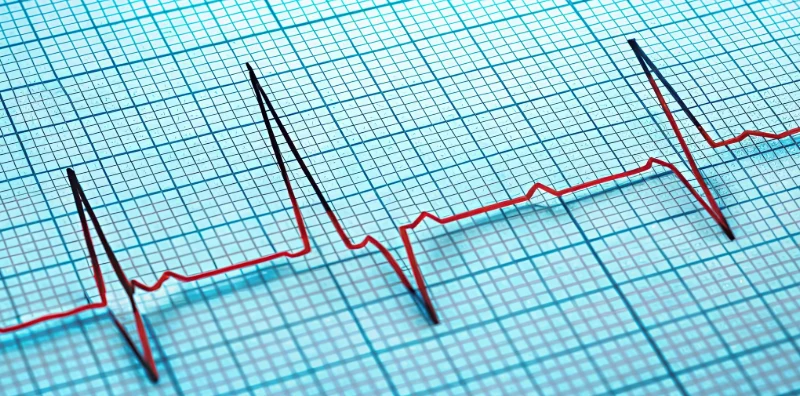Drug companies are far better marketers than developers of new medical breakthroughs. Terms like “revolutionary”, “game-changer”, or “medical breakthrough” are used as standard practice, especially since drug companies can advertise on television. In 2024, they spent more than 5 billion dollars on television advertising. Not surprisingly, the most significant increase in TV advertising in 2024 came from GLP-1 drugs, such as Ozempic. One of the catchy advertising points is that it “reduces cardiovascular risk”.
Well, does it? Drug companies routinely talk about relative risk reduction to make their clinical trial data look impressive. However, the accurate indication of a drug’s effectiveness is the absolute risk reduction it provides to a patient. This number can be more easily understood by the average person as the Number Needed to Treat (NNT). The NNT gives you an indication of the likelihood that you will actually see a benefit if you take the drug.
However, the NNT can only be determined after several clinical trials have been published, which usually means years after the initial drug approval and the resulting marketing blitz by the drug companies, who want to maximize their return on investment in the shortest period of time. Therefore, it takes years to gain enough information to make an NNT calculation, and drug companies have no incentive to do such calculations.
The NNT is defined as one divided by the absolute difference in clinical benefits between those getting the drug versus those getting the placebo. As an example, if two percent of the people taking a hypothetical drug had a clinical benefit and one percent of the people in the placebo group had the same benefit, then the NNT for that drug would be:
NNT=1/(0.02-0.01)=100
This means only one person out of 100 who actually took the hypothetical drug as directed would see a clinical benefit. It also means that 99 out of 100 who took the hypothetical drug would not get a clinical benefit. Those aren’t very good odds, and hardly worth the name “revolutionary”. For a more detailed description of the NNT, you can go to www.theNNT.com.
So, with this explanation as background, how do GLP-1 drugs perform in preventing fatal heart attacks over four years (1)? The NNT is 1744. This means that one person out of 1744 taking the drug would be saved from a fatal heart attack. Of course, the other 1743 would have no benefits. How about preventing a non-fatal heart attack? Here, the odds are a little better; the NNT is 208. This means one person out of 208 who gets this benefit after taking the drug for years, but the other 207 taking the same drug would have no benefit.
But there are other drugs used to prevent heart attacks. These are drugs like aspirin, statins, and hypertensive drugs. So, how do GLP-1 drugs stack up against other medications?
| Drug | NNT |
| Aspirin | 361 |
| GLP-1 drugs | 208 |
| Statins | 104 |
| Hypertensive drugs | 74 |
GLP-1 drugs are more effective than aspirin, but less effective than statins and hypertensive drugs, which are a lot less expensive. But at least you lose weight with the GLP-1 drugs. While that’s true, you also have to calculate the number needed to harm (NNH) as drugs have side effects. You can calculate the NNH using a similar formula as shown below:
NNH=1/(side effects in the treated group minus the side effects in the placebo group)
Whereas the lower the NNT, the better the drug is. On the other hand, the lower the NNH, the more side effects the drug generates. Ideally, the NNT should be far lower than the NNH. Most of the side effects of GLP-1 drugs are gastrointestinal effects and nausea. For these side effects, the NNH for GLP-1 drugs is about 8. This means you are far more likely to have significant side effects (about a 12% chance) than to prevent a non-fatal heart attack (about 0.05% chance). From this perspective, GLP-1 drugs don’t look like “game-changers”.
So, if you have a cardiovascular problem, what should you do? You might consider Metabolic Engineering®. Heart disease, as well as obesity and diabetes, is strongly associated with insulin resistance. Metabolic Engineering® is an integrated dietary system designed to activate AMPK, the master regulator of metabolism (2). The most effective way to activate AMPK is by calorie restriction. Increased AMPK activity causes fat loss, reduces insulin resistance, and decreases the symptoms associated with diabetes. However, the only calorie-restriction system that generates all three benefits, plus increasing lean body mass, is the Zone diet (3, 4, 5). When you add adequate levels of omega-3 fatty acids to reduce residual chronic low-level inflammation and consume sufficient intakes of polyphenols to reduce oxidative stress that causes DNA damage to the Zone diet, now you have Metabolic Engineering® (6). The NNT of Metabolic Engineering® is very low (that’s very good) and NNH is exceptionally high (that’s great). Now that’s a game-changer.

References
1. Tang ASP, Hsu JTY, Chong SKS, et al. Glucagon-like peptide-1 receptor agonist in myocardial infarction and atherosclerotic cardiovascular disease risk reduction: A comprehensive meta-analysis of number needed to treat, efficacy and safety. Cardiovasc Diabetol. 24:285 (2025). doi: 10.1186/s12933-025-02840-3.
2. Herzig S, Shaw RJ. AMPK: Guardian of metabolism and mitochondrial homeostasis. Nat Rev Mol Cell Biol. 19:121-135 (2018). doi: 10.1038/nrm.2017.95.
3. Stentz FB, Brewer A, Wan J, et al. Remission of pre-diabetes to normal glucose tolerance in obese adults with high protein versus high carbohydrate diet: randomized control trial. BMJ Open Diabetes Res Care. 4:e000258 (2016). doi: 10.1136/bmjdrc-2016-000258.
4. Stentz FB, Mikhael A, Kineish O, Christman J, Sands C. High protein diet leads to prediabetes remission and positive changes in incretins and cardiovascular risk factors. Nutr Metab Cardiovasc Dis. 31:1227-1237 (2021). doi: 10.1016/j.numecd.2020.11.027.
5. Stentz FB, Lawson D, Tucker S, et al. Decreased cardiovascular risk factors and inflammation with remission of type 2 diabetes in adults with obesity using a high protein diet: Randomized control trial. Obes Pillars. 4:100047 (2022). doi: 10.1016/j.obpill.2022.100047.
6. Sears B, Saha AK. Dietary control of inflammation and resolution. Front Nutr. 8:709435 (2021). doi: 10.3389/fnut.2021.709435.





7 comments
OK, but you left out important information …
What are the specific NNT and NNH numbers for Omega-3 Fatty Acids, for the Zone Diet, and for Metabolic Engineering ? The article specific says: “Terms like “revolutionary”, “game-changer”, or “medical breakthrough” are used as standard practice, especially since drug companies can advertise on television. ” Then you do the same thing! You can do better… What are the specific numbers, with the same type of analysis summary as for GLP-1 Drugs?
My article deals with published data on the NNT of semaglutide (i.e, Ozempic) and cardiovascular disease. Among the other working slogans used in marketing of Ozempic is lose weight and lower your HbA1c. First, there is weight loss on Ozempic, but up to 40% of that weight loss is lean body mass. Among the references that I included in that blog were clinical trials using only the Zone diet to treat diabetics and pre-diabetics. Unlike Ozempic, the Zone diet also caused weight loss, but unlike Ozempic, there was an increase in lean body mass. Obviously, there was no need to do an NNT analysis since the NNT=1 for gain in lean body mass compared to a loss of lean body mass on Ozempic. The NNH can only be estimated to be greater than 1,000 for the Zone diet (i.e., no harm) compared to a NNH of 8 for Ozempic.
One of the references in the blog used the Zone diet to treat type 2 diabetes. Using the Zone diet alone there was complete remission of type 2 diabetes in six months. The HbA1c dropped into the normal range with the Zone diet. Although no NNT data exist yet for Ozempic in the remission of type 2 diabetes, I am not aware of any clinical trial with Ozempic that has demonstrated remission of type 2 diabetes. Thus, the NNT for the Zone diet for remission of type 2 diabetes appears to be 1 and the NNH can be estimated to be approximately 1,000 (i.e., no harm) compared to a NNH of 8 for Ozempic.
You are correct that there are no published trials on cardiovascular risk using only the Zone diet, but according to the American Diabetes Association, if you have type 2 diabetes, then your risk of cardiovascular disease is doubled. I make the assumption that if you cause remission of type 2 diabetes using only the Zone diet, then there should be a significant reduction in cardiovascular events and the NNT should be significantly lower than Ozempic that is described in the blog.
However, the Zone diet is only one component of Metabolic Engineering. I will take the leap of faith that adding omega-3 fatty acids and polyphenols to the Zone diet to reprogram metabolism in chronic conditions such as type 2 diabetes as well as cardiovascular disease would improve the clinical outcomes for the patients compared to the drug alone. As example, is known from the JELIS trial that adding 1.8 grams of omega-3 fatty acids to cardiovascular patients on statins resulted in a 19% decrease in major coronary events over a five-year period compared to those cardiovascular patients taking statins and receiving placebo capsules.
This is not to say that Ozempic is bad, only that its benefits are overly hyped to the general public. I feel that published clinical data suggests combining Ozempic therapy with Metabolic Engineering for weight loss and/or treatment of type 2 diabetes should improve clinical outcomes to a greater extent. Alternatively, one should able to achieve the similar clinical outcomes at a lower drug dosage. I believe the same is true for cardiovascular disease.
I understand your point… but, people aren’t taking GLP-1 drugs for the cardiovascular benefits. That is a good side effect, but they are taking the drugs to lose weight. I agree that a diet approach like the Zone, coupled with an active lifestyle and perhaps some fish oil can achieve the same or possibly even greater results for cardiovascular health. People are looking for a medicine to solve the problem, otherwise they would not be taking the medication. These are people that have tried and failed dieting and would rather take a medicine than work hard on lifestyle changes.
The basic point of the blog is to point out that all drug companies tend to over-promote the benefits of their drugs. GLP-1 drugs were originally developed to treat type 2 diabetes. It is only when you push them to higher dosages that appetite suppression becomes significant, thus causing weight loss. Of course, those higher doses cause greater side effects. However, the true goal of weight loss is to lose excess body fat and retain, if not increase, lean body mass at the same time.
The clinical data on Ozempic suggest that 40% of the total weight loss consists of lean body mass, and that the reduction in percent body fat is not enough to move most patients into a non-obese category. This means they are still at high risk of developing type 2 diabetes. That is why, in my references, I included a six-month study that demonstrated only one component of Metabolic Engineering®, the Zone diet, causes a reduction in body fat with an increase in lean body mass. That is the Holy Grail of weight loss.
Furthermore, that change in body composition corresponded to complete remission in type 2 diabetes as measured by HbA1c. In fact, patients on the Zone diet were not even pre-diabetic at the end of six months. Thus, using NNT as a marker to measure effectiveness, the Zone diet would have an NNT of 1 for fat loss with simultaneous gain in lean body mass, and an NNT of 1 for the treatment of type 2 diabetes.
I agree the challenge is lifetime compliance, but the fact that about 50 percent of non-diabetic patients that start taking GLP-1 drugs for weight loss stop after one year. As soon as they stop, the lost weight returns, most likely as increased body fat, thus making their risk for developing type 2 diabetes and cardiovascular disease potentially higher than before they started the drugs. That’s not a very good drug.
I do the zone diet, Zone omega-3 fatty acids and polyphenols. I am a type 2 diabetic. The zone diet is easy and the products are fantastic. My A1c is 5.3. That shows results.
How can one transition from GLP-1 therapy to Metabolic Engineerina and minimize the threat of an increase in body fat?
Transitioning from GLP-1 drugs to Metabolic Engineering is easy; it starts with your next Zone meal. Both GLP-1 drugs and the composition of a Zone meal cause satiety by interacting with receptors in the brain causing appetite suppression. ZoneRx Foods takes the guess work out of getting and maintaining the appropriate balance of protein-to-glycemic load at each meal. GLP-1 drugs use a brute force effect with weekly injections that cause significant side effects. Even so, all the weight loss stops after one year even though you are using the highest dose of the drug. Using ZoneRx Foods takes all of the guess work out of using the Zone diet so that fat loss continues starting with your first Zone meal. Furthermore, using the Zone diet your lean body mass increases instead of decreasing by using GLP-1 drugs. The result is you are losing excess fat and simultaneously gaining lean body mass. This is your real goal.